SCHOCH TILE
HARDWOOD
Nature's Beauty
Hardwood By Schoch
Click Each Section For More Details
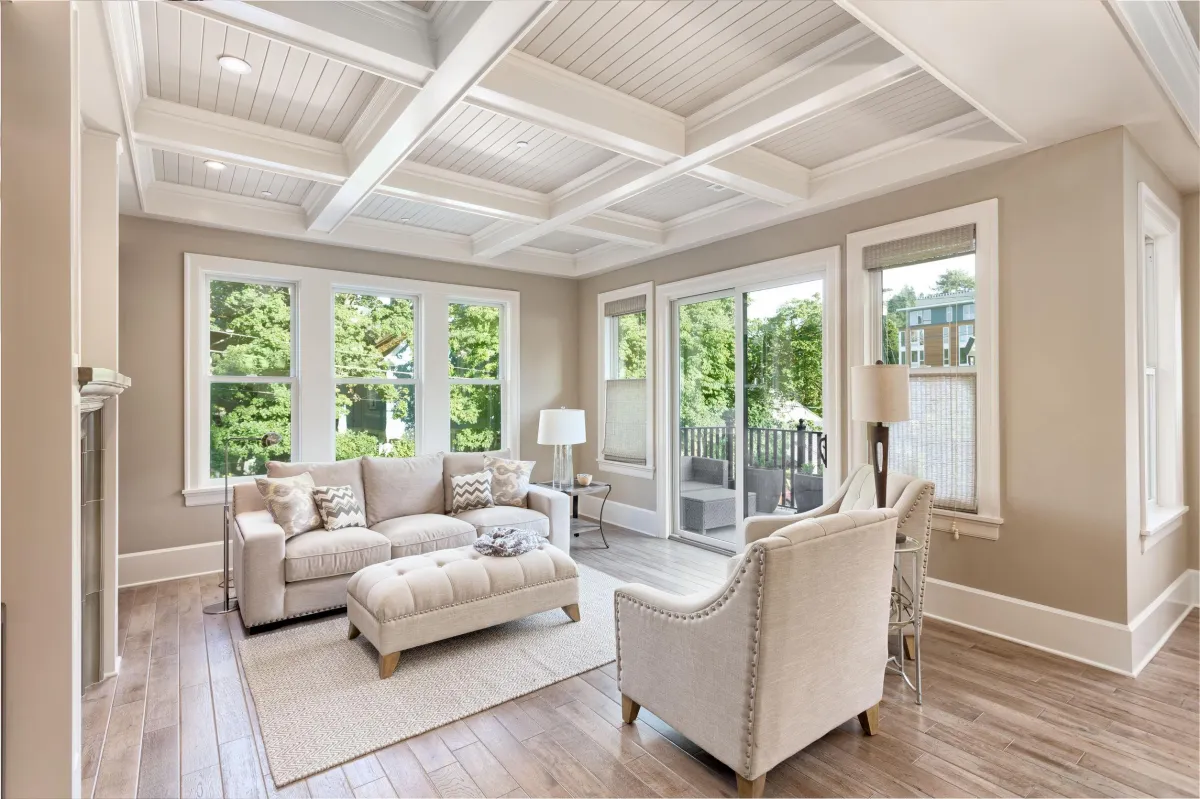
OUR KNOWLEDGE OF HARDWOOD IS SOLID
We understand the features, advantages, and benefits that make hardwood a solid flooring choice. We want you to know all about hardwood, and to understand this versatile product, so you can decide if it is the smartest flooring choice for you. The elegant look of hardwood flooring can add warmth and character to any room.
Rich inviting hardwood floors are not only beautiful to live with, but they are also easy to care for and can add value to your home at resale time. Today’s hardwood has varieties that are more diverse and delightful than ever and as the consumer demand for hardwood floors has grown, so has the manufacturers’ abilities to produce better quality finishes and superior construction techniques.
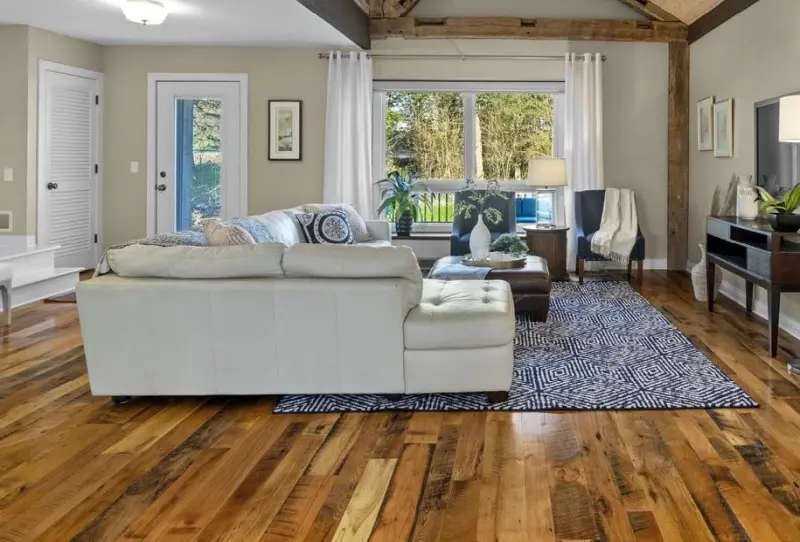
THINK SOLID AND EXPANSIVE
Solid wood floors are made of solid pieces of wood that have tongue and groove sides. They tend to be floors that are unfinished, but there are also many pre-finished 3/4” solid wood floors. Solid wood floors are sensitive to moisture and are not recommended for installation below ground level or directly over a concrete slab. Solid wood floors can be refinished, or recoated, several times, which adds to their appeal and their long life in your home. Because they are a natural product, hardwood flooring will expand and contract in response to seasonal changes in moisture. Therefore, it is important to leave a proper expansion area around the perimeter and to acclimate the wood prior to installation when installing a solid strip floor. This will help assure a lasting, beautiful application.
Oak is commonly used for solid, unfinished wood floors. There are several different qualities of oak to choose from. These qualities are clear, select, better, #1 common, and #2 common. The clear has no visual blemishes or knots and is extremely expensive. While the select and better qualities have some small knots and very little dark graining. The #1 common and #2 common have more knots and more dark graining. Be aware of this and know which quality of wood you are buying.
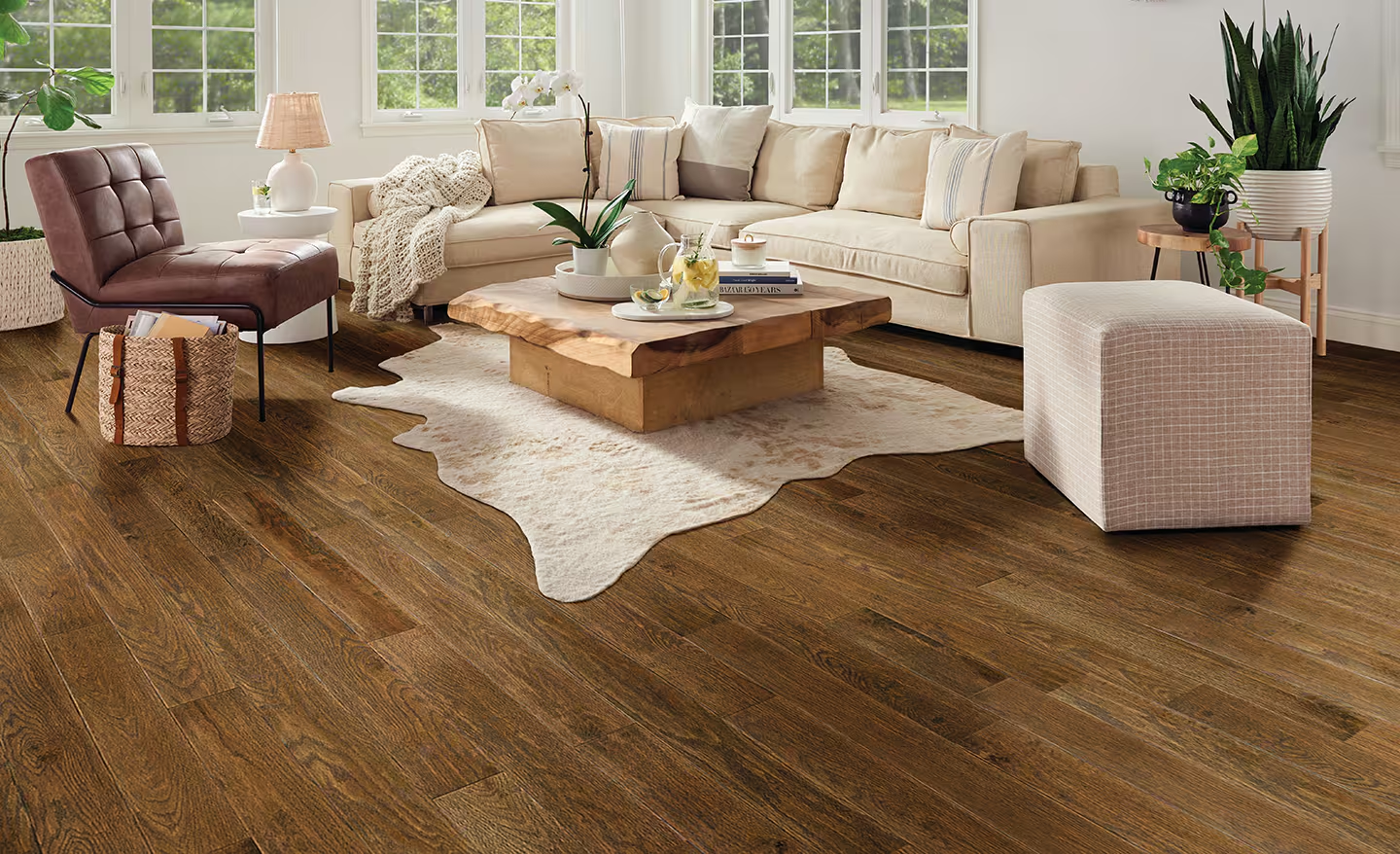
EFFICIENT ENGINEERED SOLUTION
Engineered wood floors are generally manufactured with 2, 3, or 5 thin sheets, or plies, of wood that are laminated together to form one plank. Then a wood veneer is added to the top layer. This construction creates a wood floor that is dimensionally stable and less affected by moisture than a solid wood floor.
One advantage of engineered construction is that the plies can counteract each other which will stop the plank from growing or shrinking with changes in humidity. Another advantage is versatility. You can install these floors over any subfloor. Most engineered floors can be nailed down, stapled down, glued down, or floated. Engineered floors range in sizes and the board widths can be mixed to create a truly custom look for your home. Because engineered floors are made from several layers of wood, the top finish layer can be a completely different wood species.
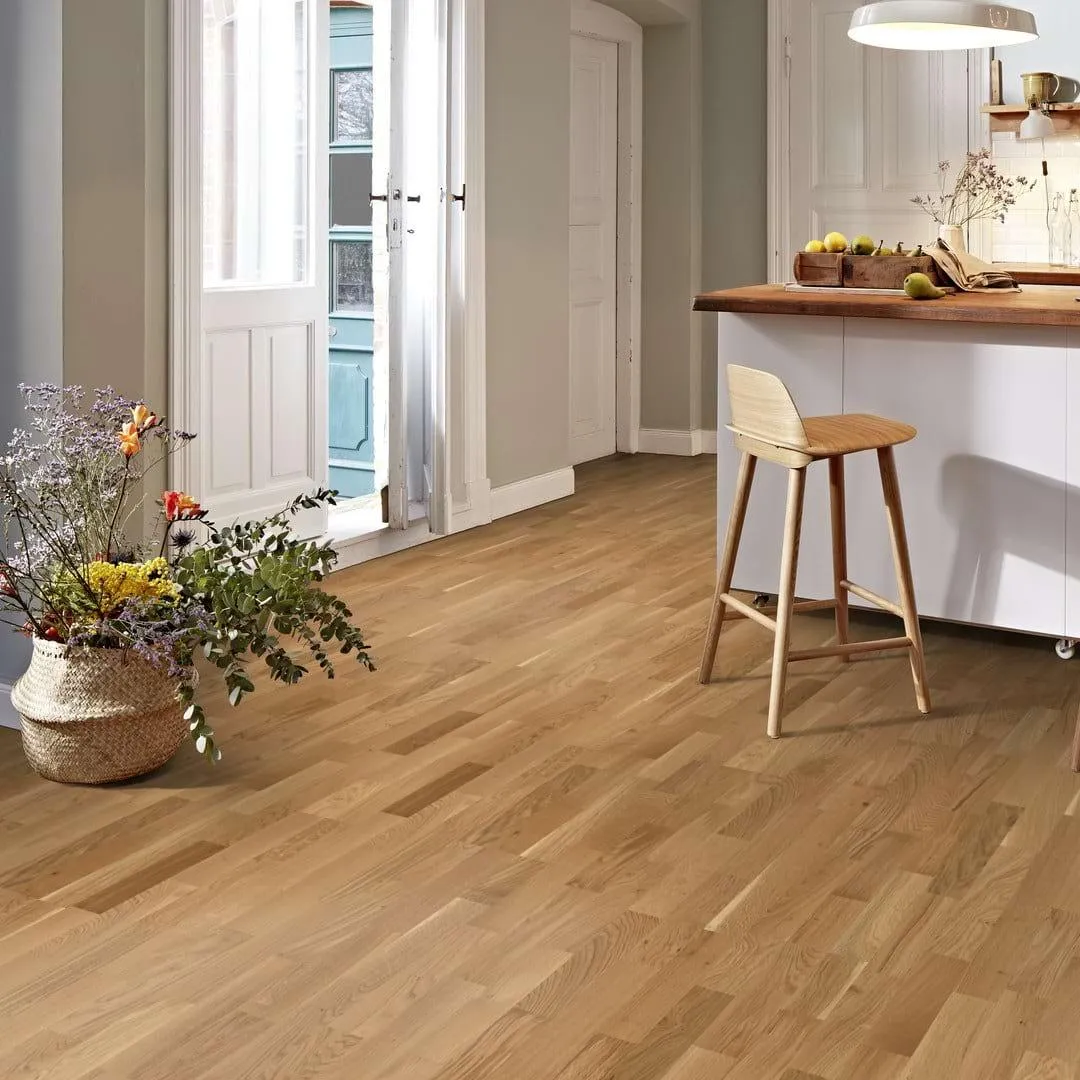
THE EASY-TO-REPLACE LONGSTRIP
Longstrip plank floors have several wood plies that are glued together. The center core is generally a softer wood material and is used to make the tongue and groove. A hardwood finish layer is glued on top of the core. The top layer can be almost any hardwood species and is made up of many smaller individual pieces that are laid in three rows. Longstrip planks are approximately 86” in length and 7 1/2” in width. They have between 17-35 pieces that make up the top layer of each board. This gives the effect of installing a board that is three rows wide and several planks long.
Each longstrip plank looks like an entire section that has already been pre-assembled. Longstrip planks are designed for a floating installation but can also be glued or stapled down. Because these floors are generally floated, they are extremely versatile and can go over a wide variety of subfloors. Longstrip floors come in a wide variety of hardwood species and are easy to replace. This can be an advantage for active homes.
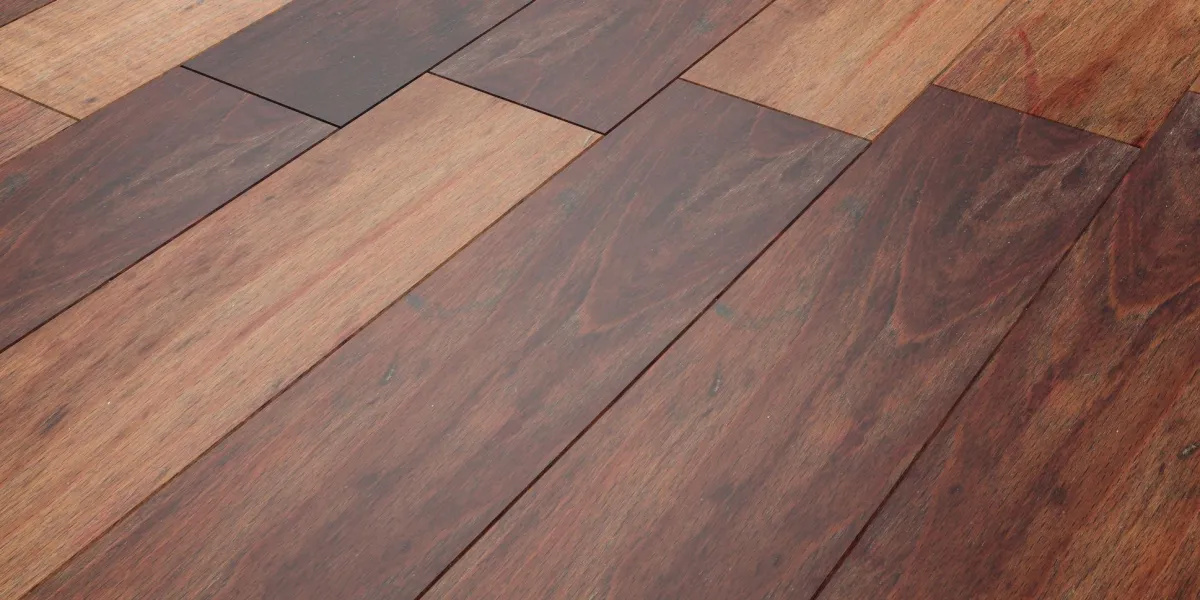
SHOP SMARTER AND COMPARE HARDWOOD WITH CONFIDENCE
Today you can choose between a prefinished hardwood floor and one that is unfinished. Prefinished hardwood comes ready for installation in your home. The hardwood boards have already been sanded, stained, and finished at the manufacturing plant. In many cases, this can provide a harder, better-protected surface.
Prefinished floors offer a wider variety of wood species and save hours of labor and cleanup. The days of having to wax and scrub your hardwood floors are pretty much gone forever. Manufactures of prefinished wood floors have developed sophisticated techniques to quickly apply hard, durable, urethane-based finishes right at the factory. By using ultra violet lights, the prefinished planks can have several coats of urethane applied within minutes. This is one of the reasons why many flooring retailers and builders are pushing prefinished hardwood floors. Instead of taking several days to install and finish a new hardwood floor, a prefinished hardwood floor is generally done in one day.
On the other hand, unfinished floors allow you to have a custom job. You choose the wood species and it is sanded and stained on site. With unfinished floors, you also can level the surface of the entire floor after it has been installed. You get an extended factory finish warranty with prefinished floors, but not with most job-site finishes.
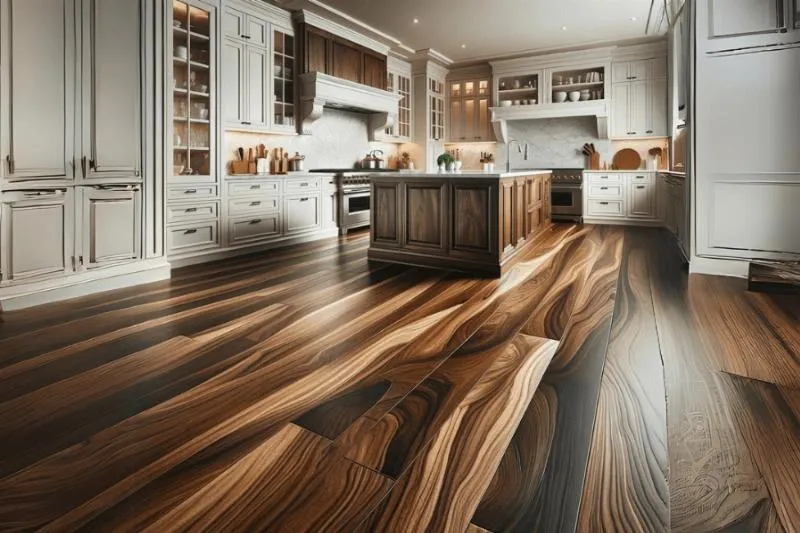
THE DIFFERENT HALLMARKS OF HARDWOOD
Each wood has its own unique characteristics. The color of the wood is determined by what part of the tree the wood originally came from. The grain pattern is determined by the species and how the wood is cut. Natural variations in the color and grain are normal and to be expected. All hardwood floors will fade, darken, or change shades over time. Exposure to sunlight will greatly increase this process. Window treatments are recommended as well as rotating rugs and furniture to allow floors to age evenly from sunlight exposure.

KNOW THE ENTIRE COST OF OWNERSHIP
The “cost per square foot” of your hardwood flooring is just one component of the entire project cost. To ensure that there are no surprises and that the hardwood you select fits into your overall budget, be sure to ask us to calculate the total cost of your floor covering project. There are many potential additional expenses that you may incur, such as furniture removal or replacement, demolition and disposal of old floor coverings, subfloor preparations, adhesives, product delivery, and installation.
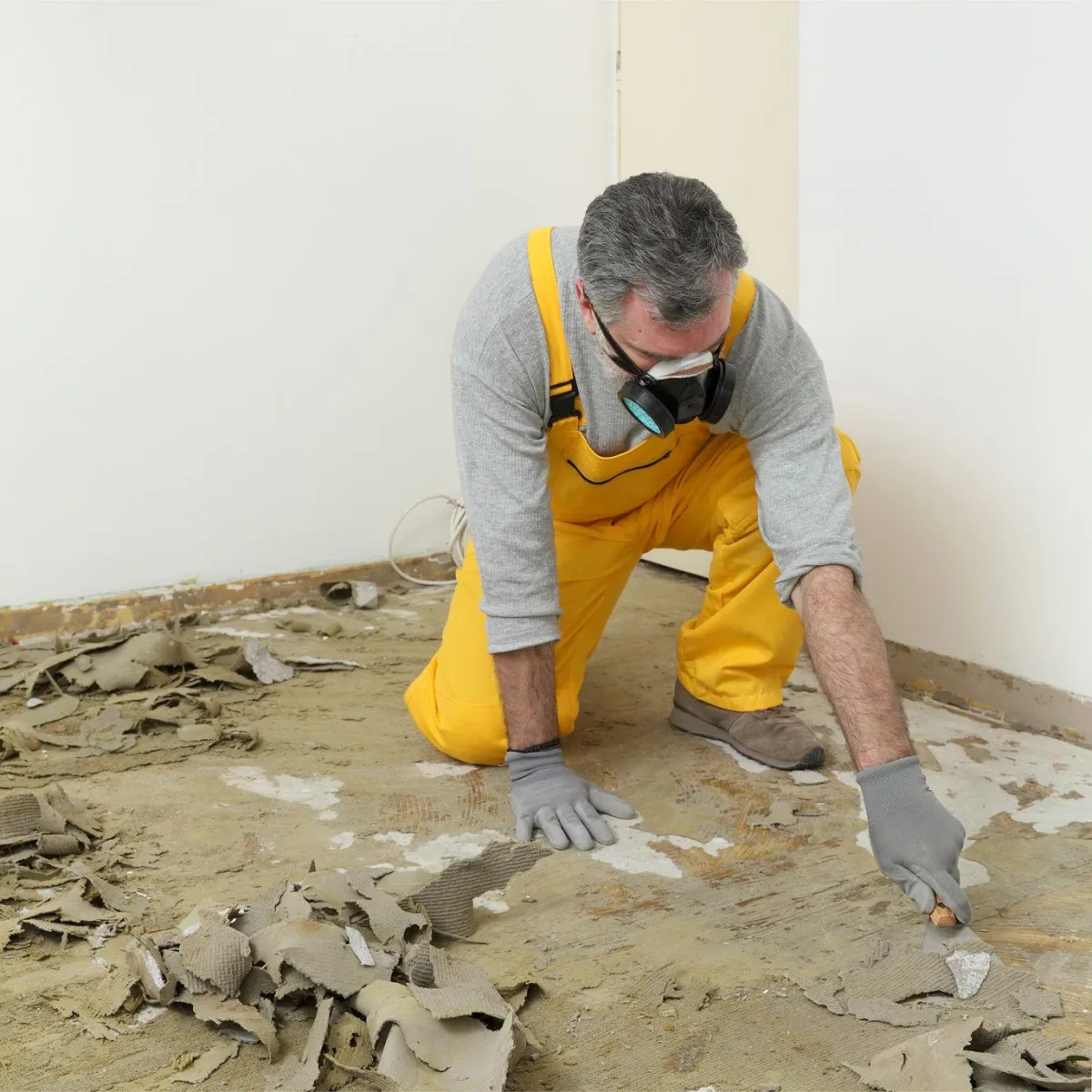
WHAT TO EXPECT BEFORE INSTALLATION DAY
Being prepared will make the entire process go faster, more efficiently, and hopefully eliminate any surprises. Make sure you have a seasoned, dedicated professional hired so you can be assured that you will receive a beautiful, efficient, and correct installation.
Remove all furniture and other objects from the areas where the installation will take place. If you are removing your current floor covering, do it at least one day prior to the arrival of your hardwood product to allow for cleanup and floor preparation. If removing old carpet, please leave tack strips in place and pull out the staples from the floor. In many cases, moldings and baseboards need to be removed for the hardwood installation.
Your existing subfloor may need to be prepared to receive the hardwood or a new subfloor may be required. It is important that the subfloor be as clean and level as possible. All hardwood products need to be acclimated to the new environment for at least four to five days prior to installation. The area of installation must be climate controlled and indoor humidity should be maintained between 45-65%.
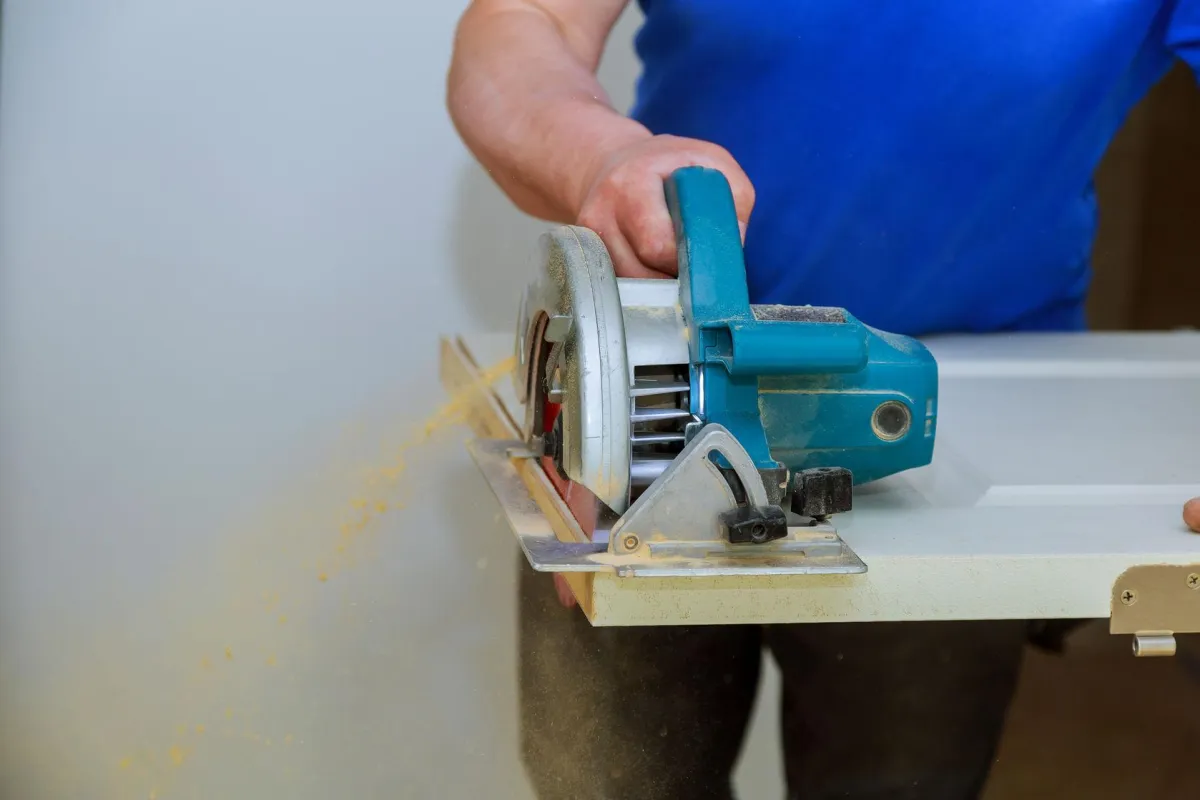
WHAT TO EXPECT DURING INSTALLATION
Plan on being home on installation day. Be prepared to be available in case the installers have questions. Your installers will use a variety of tools that can make the work area hazardous. Please be sure that children and pets are kept out of the area on installation day.
Your installer will use one of four methods to install your new hardwood floor: nail down, staple down, glue down, or float. In a nail down installation, 2” nailing cleats are used with a wood flooring nailer and mallet to attach the flooring to the subfloor. During a staple down installation, staples are used instead of nails. A pneumatic gun is used to drive the staple into the wood flooring and subfloor. With a glue down installation, an adhesive is spread on with a trowel and then adhered to the subfloor. In a floating installation, the floor is not fastened to any part of the subfloor. A thin pad is placed between the wood flooring and the subfloor. Then a wood glue is applied in the tongue and groove of each plank to hold the planks together. Engineered wood floors and parquets are typically glued down. Solid strip floors and plank floors can be nailed or stapled down. Engineered floors and longstrip floors can be floated.
When hardwood is installed, there is always the possibility that the doors may not clear the new hardwood and swing freely. Some installers will remove doors in order to install the hardwood and rehang them. You may need to arrange for a carpenter to shave or cut down doors to ensure clearance.
Prior to the completion of the installation, do a walk through with the chief installer. This will give you the opportunity to ask questions and to be clear on any final details.
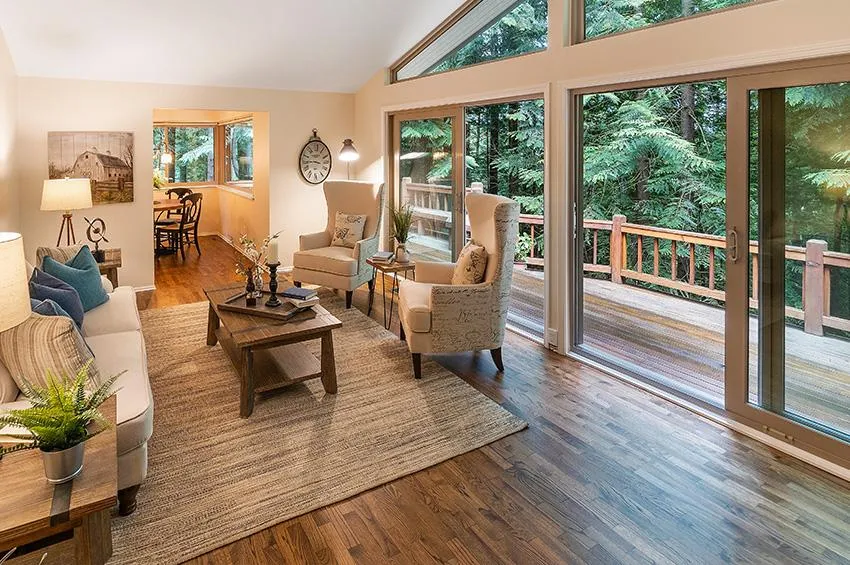
WHAT TO DO AFTER INSTALLATION DAY
Good ventilation should be established for 48-72 hours after installation. Usually, the waste materials are collected by your installer and left at your trash collections site but check with us, so you are clear about the cleanup. Painted baseboards, woodwork, and paint may need retouching after the installation is complete. If necessary, this is your responsibility.

MAINTAINING YOUR HARDWOOD REQUIRES KNOW-HOW
Once installed, your hardwood floor will look beautiful, but consistent and correct maintenance will ensure it remains that way.
Above Grade
Any floor that is above the level of the surrounding ground on which the structure is built.
Acrylic Impregnated
Acrylic monomers are injected into the cell structure of the wood to give increased hardness and then finished with a wear layer over the wood.
Acrylic Urethane
A slightly different chemical make up than Polyurethane with the same benefits.
Aluminum Oxide
Added to the urethane finish for increased abrasion resistance of the wear layer, which is becoming extremely popular on the better grade wood floors.
Below Grade
A cement slab poured below the level of the surrounding terrain.
Better
A quality of oak. Better Oak has some small knots and very little dark graining.
Beveled Edge
These products have a very distinctive groove in them. Beveled edge planks lend themselves to an informal and country decor. With the urethane finishes applied at the factory today, the beveled edges are sealed completely, making dirt and grit easy to be swept or vacuumed out of the grooves.
Buckle
In the summer months, when the humidity is higher, wood will expand and gaps will disappear. If there is too much moisture it may cause the wood planks to cup, or buckle.
Ceramic
Advanced technology that allows the use of space-age ceramics to increase the abrasion resistance of the wear layer.
Clear
A quality of oak. Clear Oak has no visual blemishes or knots and is extremely expensive.
Cross-ply Construction
Engineered wood plies that are stacked on top of each other but in the opposite direction is called cross-ply construction. This creates a wood floor that is dimensionally stable and less affected by moisture than a 3/4” solid wood floor. Cross-ply construction allows the plies to counteract each other which will stop the plank from growing or shrinking with the changes in humidity. The other advantage for you is versatility. You can install these floors over concrete slabs in your basement as well as anywhere else in your home.
Cupping
A type of warping with a concave condition; the sides are higher than the center.
Eased Edge
Each board is just slightly beveled. Some manufacturers add an eased edge to both the length of the planks as well as the end joints. Eased edges are used to help hide minor irregularities, such as uneven plank heights. Eased edge is also called micro-beveled edge.
Engineered
One of the three common types of wood floors. (Others are Solid and Longstrip Plank.) Engineered wood floors are generally manufactured with 2,3, or 5 thin sheets or plies of wood that are laminated together to form one plank. Most engineered floors can be nailed down, stapled down, glued down, or floated over a wide variety of subfloors, including some types of existing flooring.
Finish in Place
Finish in Place, or unfinished hardwood, is installed in the home and then sanded. The stain and 2-3 coats of urethane finish are then applied. The urethane finish, brushed or mopped on, is known as a “floor finish” not a “furniture finish”. Finish in Place floors may be screened and recoated to rejuvenate the finish and revitalize the floor’s natural beauty.
Floating Floor Installation
With the floating installation method the floor is not mechanically fastened to any part of the subfloor. A thin pad is placed between the wood flooring and the subfloor. Then a recommended wood glue is applied in the tongue and groove of each plank to hold the planks together. The padding has its advantages: it protects against moisture, reduces noise transmission, is softer under foot, and provides for some additional "R" value. Some engineered floors and all Longstrip floors can be floated.
Glue Down
The recommended mastic or adhesive is spread on with the proper sized trowel to adhere the wood flooring to the subfloor. You should know that engineered wood floors and parquets can be glued down. Solid strip floors and plank floors can only be nailed or stapled.
Graining
Each wood species has its own unique graining and texture. The graining on the boards is determined by the way it has been cut. Natural variations in the color and grain are normal and to be expected.
Janka Hardness Test
This wood hardness rating test measures the force needed to embed a .444 inch steel ball to half its diameter in a piece of wood. The higher the number the harder the wood. Although this is one of the best methods to measure the ability of wood species to withstand indentations, it should be used as a general guide when comparing various species of wood flooring.
Knot
On a piece of wood, the round, harder, usually darker in color, cross section of where the branch joined the trunk of the tree.
Laminate
Laminate is a manufactured product that simulates the look of hardwood, ceramic tile, natural stone and many other types of flooring.
Long Strip Plank
One of the three common types of wood floors. (Others are Engineered and Solid.) Long Strip Plank floors are similar to Engineered floors and have several wood plies that are glued together. The center core is generally a softer wood material and is used to make the tongue and groove. A hardwood finish layer is glued on top of the core. The top layer can be almost any hardwood species and is made up of many smaller individual pieces that are laid in three rows. This gives the effect of installing a board that is 3 rows wide and several planks long. Long Strip floors come in a wide variety of domestic and exotic hardwood species and when damaged they are easy to replace.
Moisture Cured Urethane
A similar chemical make up as solvent-based urethanes, but this finish needs the humidity (moisture) in the air to cure.
Moldings
Are used to cover expansion joints and to enhance the performance and appearance of the hardwood floor. In many cases, moldings and baseboards need to be removed for hardwood installation.
Nail Down
This method is typically used with the 3/4" solid products, however there are adapters available for thinner flooring sizes as well. 2" nailing cleats are used with a wood flooring nailer and mallet to attach the flooring to the subfloor.
Number 1 Common
A quality of oak. Number 1 Common Oak has more knots and more dark graining.
Number 2 Common
A quality of oak. Number 2 Common Oak has more knots and more dark graining.
On-Grade
A cement slab that exists on the same plane as the surrounding terrain.
Plank
When shopping for a hardwood floor you will see boards in various sizes. The narrower board widths are referred to as “strips” and the wider units as “planks.” When we think of solid wood floors we generally are talking about a 3/4" thick plank that is 2 1/4" wide. This is the classic strip wood floor, although it is possible to find a narrower width or a slightly thinner gage. The strips are generally in random lengths from 12" – 84".
Polyurethane
A clear, tough and durable finish that is applied as a wear layer.
Pre-Finished Wood Floor
Pre-finished hardwood flooring comes ready for installation in your home. The hardwood boards have already been sanded, stained and finished at the manufacturing plant. In many cases this can provide a harder, better- protected surface. Several coats of urethane are sprayed on the boards and then they are UV dried for a very durable finish. Pre-finished floors offer a wider variety of wood species and save hours of labor and cleanup. They also may be screened and recoated to rejuvenate the finish and revitalize the floor’s natural beauty.
Rotary Cut
Each species has its own unique graining and texture. The graining on the boards is determined by the way it has been cut. Rotary Cut is a cutting process that displays a larger and bolder graining pattern.
Select
A quality of oak. Select Oak has some small knots and very little dark graining.
Sliced Cut
Each species has its own unique graining and texture. The graining on the boards is determined by the way it has been cut. Sliced Cut is a cutting process that shows a more uniform pattern.
Solid
One of the three common types of wood floors. (Others are Engineered and Longstrip Plank.) Solid wood floors are one solid piece of wood that have tongue and groove sides. When we talk about solid wood floors, we tend to think of floors that are unfinished, but it’s important to know that there are also many pre-finished 3/4” solid wood floors. Solid wood floors are sensitive to moisture and because so they are used in nail down installations and are not recommended for installation below ground level, or directly over a concrete slab.
Solvent-Based Urethane
Oil is used as part of the chemical make up of the polyurethane finish.
Square Edge
The edges of all boards meet squarely creating a uniform, smooth surface that blends the floor together from board to board.
Stapled Down
With this method 1-1/2 to 2 inch staples are used versus nailing cleats to attach the wood flooring to the subfloor. A pneumatic gun is used to drive the staple into the wood flooring and subfloor.
Strip
When shopping for a hardwood floor you will see boards in various sizes. The narrower board widths are referred to as “strips” and the wider units as “planks.” When we think of solid wood floors we generally are talking about a 3/4" thick plank that is 2 1/4" wide. This is the classic strip wood floor, although it is possible to find a narrower width or a slightly thinner gage. The strips are generally in random lengths from 12" – 84". The most common wood species used for solid strip floors are red oak, white oak, maple, cherry, white ash, hickory or pecan.
Tongue and Groove
The joining of two boards, one board having a tongue on its edge that fits into a groove in the edge of the other.
Trim
See Moldings.
Un-Finished Wood Floor
An Un-Finished wood floor allows you to have a custom job – you choose the wood species and it’s sanded and the stain is applied on site. With Un-Finished you also have the chance to level the surface of the entire floor after it has been installed.
UV Cured
Factory wood finishes that are cured with Ultra Violet lights versus heat.
Water-Based Urethane
Water is used as part of the chemical make up of the polyurethane finish.
About Us
Transform Your Space with Top-Quality Craftsmanship
Contact Us
5282 Crookshank Rd, Cincinnati OH 45238
Phone (513) 922-3466
Copyright© 2025 Schoch Tile - All Rights Reserved.
